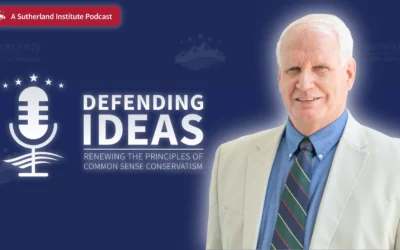
Written by The Likely Voter
February 22, 2024
![]()
The Utah State Legislature is considering ending the ranked choice voting pilot program for cities and towns in the state. According to a Sutherland Institute issue brief summarizing recent survey data, 60% of likely voters in Utah believe the pilot program should continue. Approval for ranked choice voting improves in every election category if the voter has actually participated in a ranked choice voting election. For those with questions about the program, we have compiled an FAQ to provide some clarity.
What is ranked choice voting?
Put simply, ranked choice voting is a system where voters rank candidates from their first choice to their last choice on their ballots.
In traditional voting, each vote is given to a single candidate, and the one with the most votes wins – whether or not they have a majority. In ranked choice voting, votes are given to each voter’s first choice, and if no one has more than 50% of the vote, then the candidate with the fewest votes is eliminated and another round of counting ensues. If the eliminated candidate was a voter’s first option, then their vote goes to their second option. This process continues until a candidate receives 50% of the vote.
Josh Daniels, a former Utah County clerk, joined Sutherland’s Nic Dunn on Defending Ideas to discuss ranked choice voting. Watch his brief explainer here.
Why do people like ranked choice voting?
One benefit of ranked choice voting is that the process encourages sincere voting rather than “strategic” voting. Voters can rank their first choice (or first several choices) according to their moral convictions or values without worrying that their vote will be “wasted” if it is cast for a candidate that is not one of the top contenders.
Candidates in ranked choice voting have an incentive to try to appeal to voters outside of their base, in order to be ranked second or third on those voters’ ballots. This tends to discourage negative campaigning and can result in more civil and unifying election campaigns that appeal to many voters.
In some cases, like in Utah’s pilot program, ranked choice voting can be used to eliminate the need for a primary election, saving taxpayer money. This can be particularly beneficial in areas that generate lower tax revenue, such as rural Utah.
Why do people dislike ranked choice voting?
Some people believe that voting should only mean choosing a single candidate. In this view, ranking multiple candidates is an improper way to vote.
The process of ranking candidates tends to require more education of voters than the current, traditional single-vote process. Opponents of ranked choice voting worry about voter confusion and ballot fatigue, which may cause voters frustration.
For candidates and campaigns, it alters the historical understanding of how to win an election, as the strategy and messaging can change significantly. This leaves some candidates and campaigns feeling threatened by ranked choice voting.
What are some examples of successful models?
According to a Sutherland Institute/Y2 Analytics survey, 60% of Utah likely voters want the RCV pilot program to continue. In fact, voters that have experience in using ranked choice voting express greater support for it in every type of election (local, county, state, etc.).
In Alaska, according to a survey conducted by Unite America, “52% of voters said their vote ‘mattered more’” in ranked choice voting. In the same report, 55% of Alaskans believed that they had a better list of candidates to choose from in comparison to the traditional voting model.

For more detailed information about Sutherland’s work and research on issues like ranked choice voting, visit the elections issues page here.
Takeaways: the most important things voters need to know. For civically engaged citizens.

- 60% of likely voters in Utah want the pilot program to continue.
- Sutherland has a publication and an issue brief that goes into the pros and cons of RCV and the support that Utahns have for it.
- Those with experience in ranked choice voting have shown greater approval for the process, both in Utah and Alaska.
Read More
Protecting property rights against government overreach
While governments can continue to regulate land use, these regulations and fees must be justified by a government interest and proportional to the effect of the development’s impact on that interest.
Do we need to care about the Utah State Board of Education?
For any Utah voters who also feel like K-12 public education is headed in the wrong direction, learning about the candidates running for a seat on the Utah State Board of Education (USBE) is a wise choice this election season.
Defending education choice the right way
Education choice has exploded in popularity across the nation in recent years. So why does it remain a contentious point of debate in some parts of the country?



